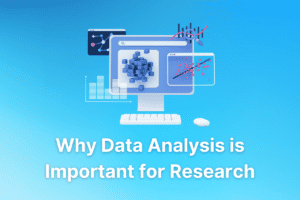Data Analytics in Healthcare: 5 Reasons Why It’s Important
We’re reader-supported; we may earn a commission from links in this article.
The healthcare industry is under pressure to provide high-quality care while reducing costs. Data analytics can help healthcare organizations achieve both of these goals.
In this blog post, we will discuss 5 reasons why data analytics is important in the healthcare industry.
What Is The Importance of Data Analytics in Healthcare?
1. Data Analytics Identifies Inefficiencies and Waste
In healthcare, inefficiencies and waste can lead to higher costs and poorer patient outcomes. Data analytics can help identify areas of waste in the healthcare system so that steps can be taken to address them.
For example, data analytics can be used to identify patterns of overuse or misuse of resources. This information can then be used to develop strategies to reduce or eliminate waste.
In addition, data analytics can help identify areas where care is not meeting standards. This information can be used to make changes in the way care is delivered so that patients receive the best possible care.
Data analytics can also be used to benchmark the performance of healthcare organizations. This information can be used to identify areas where organizations are performing well and areas where improvements are needed.
Data analytics can help healthcare organizations improve the quality of care they provide while reducing costs. This makes data analytics an important tool in the healthcare industry.
If you’re looking to get started with data analytics in healthcare, check out our blog post on the topic. We discuss the importance of data analytics in healthcare and offer some tips on getting started.
2. Data Analytics Can Track Patient Outcomes and Identify Areas for Improvement
One of the most important uses of data analytics in healthcare is tracking patient outcomes. By tracking patient outcomes, healthcare organizations can identify areas where care could be improved.
For example, data analytics can be used to track how well patients do after being discharged from the hospital. This information can then be used to make changes in the way care is delivered so that patients have better outcomes.
In addition, data analytics can be used to track the use of certain treatments or procedures. This information can then be used to determine whether a treatment or procedure is effective. If a treatment or procedure is not effective, it can be discontinued or replaced with something that is more effective.
Data analytics provides healthcare organizations with valuable information about the care they provide. This information can be used to improve the quality of care and the outcomes of patients.
3. Data Analytics Can Identify Fraudulent Claims and Abuse
Fraudulent health care claims cost the U.S. government billions of dollars each year. Data analytics can help identify fraudulent claims by looking for patterns in the data that don’t make sense.
For example, if a provider is billing for services that are not medically necessary, or if a patient is receiving services from multiple providers that aren’t related to each other, those could be red flags for fraud.
Data analytics can also help identify abuse, such as when patients are being prescribed medications they don’t need, or when providers are ordering unnecessary tests or procedures.
By identifying these patterns, data analytics can help save the healthcare system money and ensure that patients are getting the best possible care.
4. Data Analytics Can Target Marketing Efforts to Specific Patients Groups
Healthcare organizations can use data analytics to better understand their patients and target marketing efforts to specific patient groups.
For example, if a healthcare organization wants to increase its flu vaccination rates, it can use data analytics to identify which patients are most at risk for the flu and target its marketing efforts to those patients.
Data analytics can also be used to segment patients into different groups based on their needs, so that each group can be marketed to in a way that is most likely to be effective.
By using data analytics in this way, healthcare organizations can improve their marketing efforts and ensure that they are reaching the right people with the right message.
5. Data Analytics Can Plan for Future Needs by Predicting Trends
Data analytics can be used to predict future trends in healthcare, which can help organizations plan for future needs.
For example, data analytics can be used to predict how many people will need certain types of care in the future, such as cancer care or mental health services. This information can help healthcare organizations allocate resources and plan for future needs.
Data analytics can also be used to identify emerging trends, such as new diseases or changes in health care utilization. By identifying these trends early on, healthcare organizations can be better prepared to deal with them.
By using data analytics to predict future trends, healthcare organizations can ensure that they are better prepared for the future and able to meet the needs of their patients.
Final Thoughts
These are just a few of the ways that data analytics can be used in healthcare. Data analytics is a powerful tool that can help organizations improve care, save money, and better understand their patients.
If you’re not using data analytics in your healthcare organization, now is the time to start.
Thanks for reading!

Justin Chia
Justin is the author of Justjooz and is a data analyst and AI expert. He is also a Nanyang Technological University (NTU) alumni, majoring in Biological Sciences.
He regularly posts AI and analytics content on LinkedIn, and writes a weekly newsletter, The Juicer, on AI, analytics, tech, and personal development.
To unwind, Justin enjoys gaming and reading.


